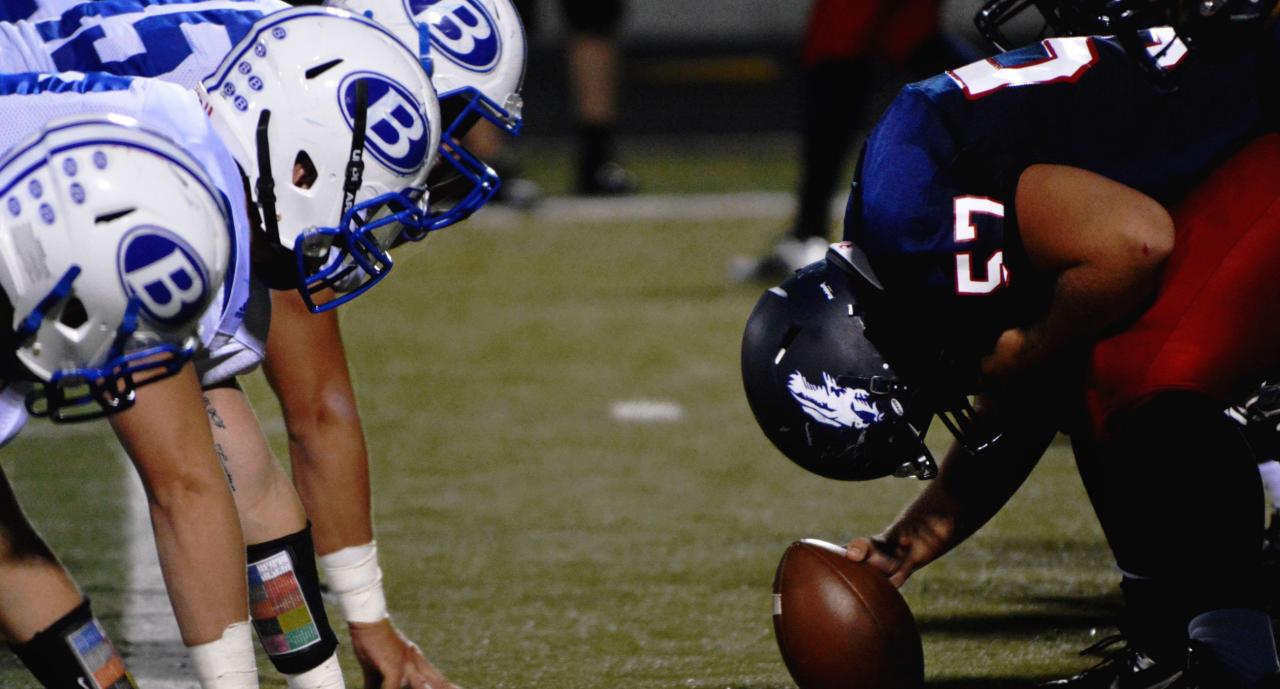 Nathan Shively/Unsplash
Nathan Shively/Unsplash
Fifth graders (usually the guys) live for a good game of football at recess. In their young minds, they are emulating their NFL heroes as they head out to the ball field. In fact, some days it becomes so competitive, I have to take the ball away. I remind them that this is not the Super Bowl, and that sportsmanship and safety are paramount. Of course, at recess, football is touch only, no tackle, and injuries are limited to a few scrapes.
I also have many students who play intramural football with pads and a helmet. What about their injury rate? The statistics suggest that contact sports, like football, are sending our students to the emergency room at a surprising rate. According to the National Center for Sports Safety, over 3 million kids ages 14 and under need treatment for a sports related injury each year. Even more alarming, 21 percent of traumatic brain injuries in children happen during organized sports.
Head injuries include concussion and hematoma. A football player can receive a concussion when the head is hit so hard, the brain actually bumps against the inside of the skull. In a hematoma, blood collects, or pools, in the brain tissues after a hard blow to the head. To test for head injuries, the doctor will scan the brain, but also perform various tests to check thinking and behavior, and motor and language skills. Furthermore, since young brains are still growing, a child's head injury will take longer to heal than an adult’s, leaving the player at risk for a second impact injury while he or she is still recovering from the first. If a student receives a second brain injury before the first concussion has healed, the injury may become life-threatening. Several states now have laws that say a coach must remove a player from the game if there is a sign of concussion.
The American Academy of Neurology has the following recommendations to ensure the safety of our young athletes:
1. If in doubt, sit the player out
2. A player is on the bench until all symptoms from head injury are gone
3. Only a neurologist or physician with proper training can okay an athlete’s return to play after a concussion
4. A certified athletic trainer should be present at both games and practices
5. Coaches, parents, and athletes should become better educated on concussions
http://patients.aan.com/resources/neurologynow/index.cfm?event=home.showArticle&id=ovid.com%3A%2Fbib%2Fovftdb%2F01222928-201107010-00011#P61
http://www.sportssafety.org/sports-injury-facts/
http://www.sportssafety.org/articles/concussion-in-the-young-athlete/






Add a Comment1 Comments
Important article. I have a young son who tends to go headlong into activities and doesn't understand his physical limits. I am an O.T. and treated many children over the years who had suffered TBI's. (traumatic brain injury). Sports are so important developmentally, but they cna laso be dangerous. I wrote a post on my therapy site http://www.milestonemom.com/how-head-injuries-may-affect-your-childs-physical-and-learning-skills/ which discusses the reality of head injuries.
May 6, 2011 - 9:38amThis Comment